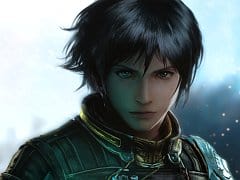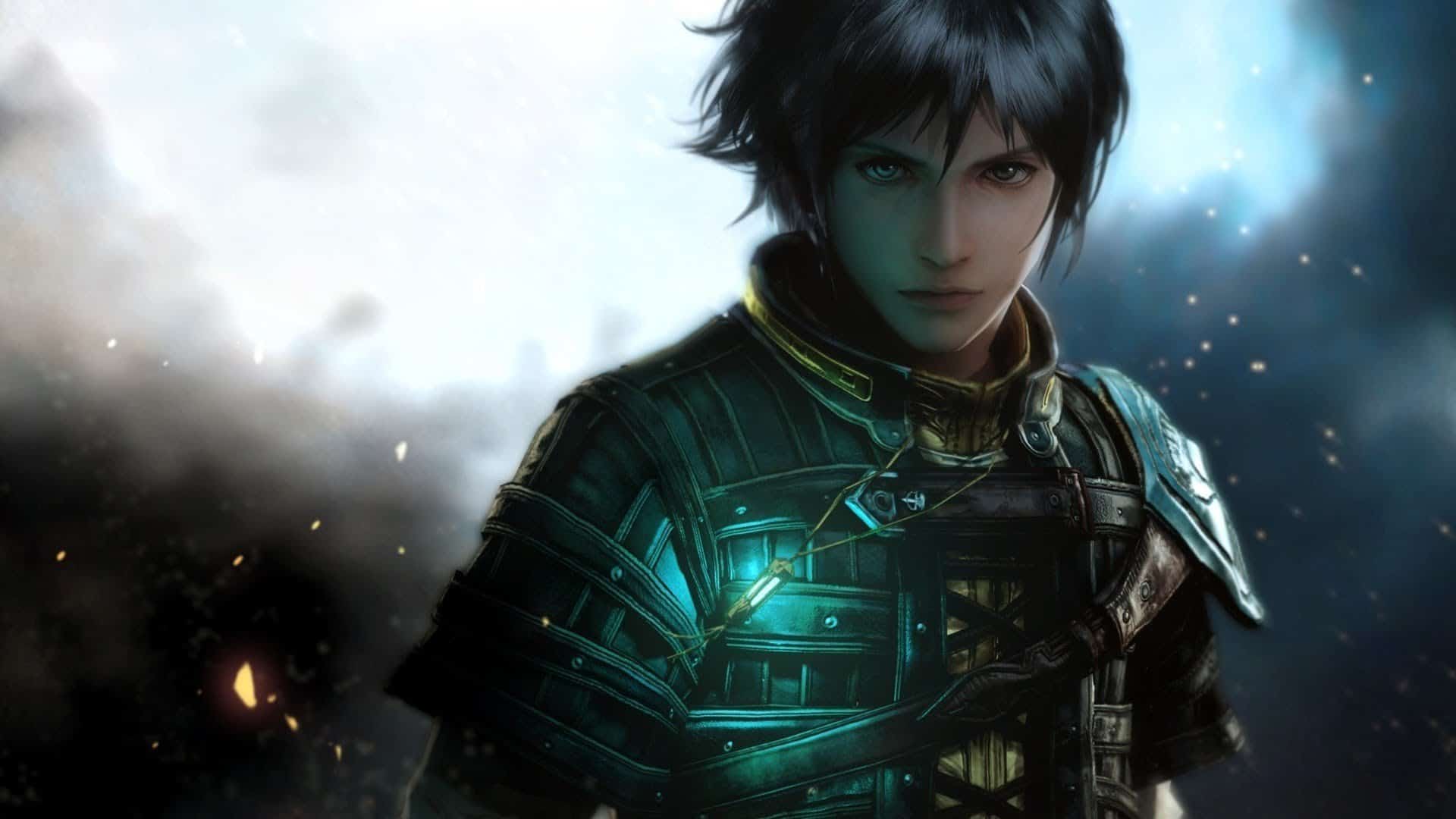You can trust VideoGamer. Our team of gaming experts spend hours testing and reviewing the latest games, to ensure you're reading the most comprehensive guide possible. Rest assured, all imagery and advice is unique and original. Check out how we test and review games here
Despite the fact that The Last Remnant has the word ‘last’ in its title, it’s a game full of firsts for Square Enix. It’s the first Square Enix game that will be released in the US, Japan and Europe on the same day, November 20. It’s the first Square Enix game ever to use Epic’s Unreal Engine 3, used in gore-fest Gears of War. And, after getting some extended hands-on time with the title, we can safely say it’s the first Square Enix JRPG that might be better described without the J.
Don’t get us wrong, it’s still unmistakeably Japanese. 18-year-old lead character, the wonderfully named Rush Sykes, is as emo and potentially annoying as FFX’s Tidus, or any other classic JRPG lead. His mission, to save his kidnapped sister, Irina, from a mysterious evil, is classic JRPG fare. And the turn-based battle mechanic and the multiple party member system will, at their core, be instantly familiar to anyone who pumped a few hours into a JRPG over the years. But it’s also got more Western influences than any role-playing game we’ve played from Square Enix.
The game begins with Rush… rushing right into the middle of a battle after picking up his missing sister’s trail. The fight is pure chaos, with Mitra (humans), Qsiti (little frog things), Yama (huge lizard fish men) and Sovani (four-armed blademasters) all going at it like a ruck at a freak show. It’s here that you’ll get your first taste of The Last Remnant’s combat system, called ‘turn burst’ by director Hiroshi Takai. It’s a kind of mix between Final Fantasy Tactics’ isometric combat and Final Fantasy VII’s turn-based combat, and is really rather good. There are no random encounters in the game and you’ll to a degree be able to pick and choose when you fight, too. If you get close to an enemy you’ll ‘aggro’ it, much like in an MMORPG. Once done, you’re in a fight. But if there’s room you’ll be able to run by without triggering a battle.
Each enemy will have one of three symbols above its head which shows what state it’s in. It might be running away, not bothered by your presence or interested in your presence. Helping you manage all of this is a ‘pull mechanic’ which, again, fans of MMORPGs will know well. By pressing RT Rush will do a pull move and agro anything within the radius of the move. You’ll want to do this, because if you pull an enemy, rather than have them get the jump on you, you’ll get first strike advantage. And you’ll want to pull as many enemies at the same time as possible, because it’ll land you much better loot when the dust settles.
It’s The Last Remnant’s battle system that really makes the game interesting. In most JRPGs we’re used to a line of three or four party members facing a line of three of four enemies, each taking turns to attack. In The Last Remnant, things are on a bigger scale. Parties are called Unions, and are made of up to five characters. Instead of giving commands to each and every member of a Union, you give a more general command to the Union leader – a context sensitive command that’s dependent on the situation you find yourself in. You can have up to five of these Unions under your control at any one time, meaning that, potentially, you’ve got 25 party members to control in a fight. That you can face up to nine enemy Unions, each with five party members, means that, at its limit, The Last Remnant can thrust you into battles involving a whopping 70 units on screen.
As you might suspect, fights in The Last Remnant are more like epic battles than small scale scraps. You’ll send your Unions off to engage other enemy groups, trying to out flank them and get bonuses as a result. Deadlock means your Union is fighting toe to toe with an enemy group. Interference means you’ve got the jump on a moving enemy party and Interception is the opposite. You feel more like a general commanding small squads in a skirmish than the leader of a squad in a small fight.
Despite the combat being turn based, you won’t be able to input your commands, put the controller down and go off to make a cup of tea. You’ll have to keep an eye on what’s going on because every now and again you’ll be challenged by a quick time event. Here, if you nail the correct timing of a particular button press, you’ll score a Critical. It might be a Critical Trigger, which means your next unit will attack faster, but there’s a Critical Offensive and a Critical Defensive that provide related bonuses, too. If you keep nailing the QTE you’ll chain them together and start increasing your power. We’re not the biggest fans of QTEs, and The Last Remnant’s QTEs won’t change that, but at least they keep you on your toes.
Complimenting this is a moral system which allows you access to special powers, displayed on a bar at the top of the screen. The better the fight is going for you, the more blue it is. The worse it’s going, the more red. One of Rush’s special attacks is called Omnistrike. That’s right Final Fantasy VII fans, we said Omnistrike. But you won’t see Rush slice and dice his enemy with a ridiculously long sword. It’s more of a flurry of punches that rekindles memories of Tifa’s Limit Break.
The ‘turn burst’ system looks very interesting indeed. It’s new, feels fresh and makes you think in ways unheard of in most JRPGs. But each battle will take a decent amount of time to work through, on account of its complexity and larger scale. It will be interesting to see how it feels after extended play, but given that after every battle you automatically recover all of your health and action points, and that you can save wherever and whenever you want, it shouldn’t become too much of a chore.
You might be wondering what the title of the game means (after Infinite Undiscovery, this is a question we find ourselves wondering whenever we see a new JRPG). Thankfully it actually makes sense. The Remnants themselves are powerful artefacts that manifest themselves differently depending on who’s using them. King David (say it like you’re Spanish, not as in ‘Big Dave’), one of the game’s central characters, manifests his into a huge cannon, called the Gae Bolg, which he starts readying to fire as the battle we talked about at the top of the preview rages.
King David’s got four generals who all play an important part in the story. Blocter is a huge tank-like Yama, Torgal is an arrogant and aloof Sovani, Emma is a matriarchal Mitra with a sexy posh English voice and Pagus is a Qsiti who looks like the love child of Kermit the Frog and Jar Jar Binks. King David fires the Gae Bolg, which blows a hole in the ground and sends Rush and Emma spiralling down into an underground cave. She’s not too happy with his appearance, and fancies him a spy of some kind. Pleading his innocence, he explains that all he’s trying to do is find his sister. Cue a flashback.
Rush and Irina are standing in a field in some far away land watching a holographic message from their parents, scientists who are away researching the power of the Remnants. They’ve just told their kids to pack their bags and come live with them when a winged beast appears in the sky and lands with a pack of monsters, surrounding the two. It snatches Irina, but not before she drops her pendant. Rush grabs it and somehow manages to destroy the remaining beasties with a magical blast without knowing how or why. Turns out the pendant is part of a Remnant, and of great interest to the game’s big bad evil – The Conqueror.
Apart from the fact that the game has been made using the Unreal Engine 3, and as a result has that classic, unmistakeable sheen to it (everyone seems to have silver hair, too), and that all the motion capturing has been done with Western actors, not Japanese, The Conqueror is perhaps the most obviously Western feature of The Last Remnant. He’s been designed specifically to appeal to Western gamers, with Western facial features, a more brutish, bulky posture and an outfit caked in the red blood of his enemies. He looks like Sephiroth’s weight-lifting dad, and very mysterious and menacing to boot.
From what we’ve played, The Last Remnant looks sure to satisfy any Xbox 360-owning JRPG fans left hungry by the disappointing Infinite Undiscovery (it’s undoubtedly a better game than Tri-ace’s effort). Despite the clear pandering to Western audiences, it’s still a very Japanese game, and we’re glad of that fact. But if Square Enix’s most Western role-playing game in its history means it’s going to be one of the best original RPGs it’s made in years, then we welcome the approach with open arms.
The Last Remnant is due out for Xbox 360 on November 20. PS3 and PC versions are due later.

/https://oimg.videogamer.com/images/e228/the_last_remnant_123.jpg)
/https://oimg.videogamer.com/images/18e7/the_last_remnant_121.jpg)
/https://oimg.videogamer.com/images/6fec/the_last_remnant_120.jpg)






